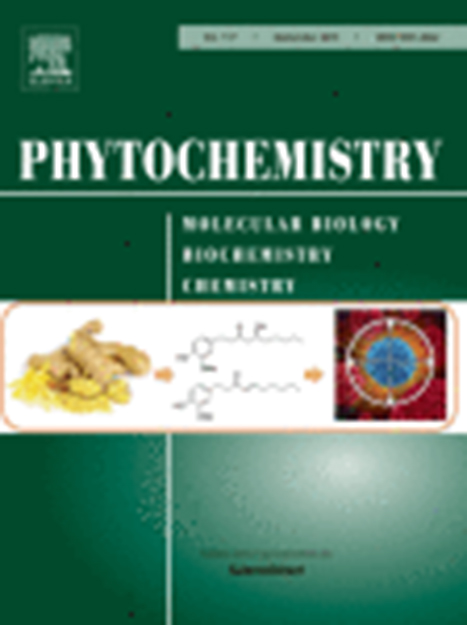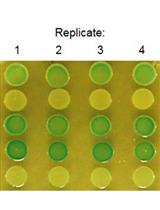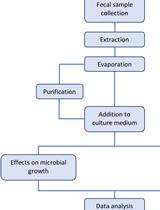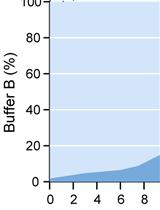- EN - English
- CN - 中文
A Bioassay Protocol for Quorum Sensing Studies Using Vibrio campbellii
采用坎氏弧菌进行群体感应研究的生物测定法
发布: 2016年07月20日第6卷第14期 DOI: 10.21769/BioProtoc.1866 浏览次数: 11554
评审: Arsalan DaudiAnonymous reviewer(s)
Abstract
Quorum Sensing (QS), or bacterial cell-to-cell communication, is a finely-tuned mechanism that regulates gene expression on a population density-dependent manner through the production, secretion and reception of extracellular signaling molecules termed autoinducers (AIs). Given that QS plays an important role in bacterial biofilm formation and virulence factor production in many pathogenic strains, QS disruptors have become a hot topic in current antimicrobial research. There are several reporter strains exhibiting QS-regulated phenotypes that have been engineered for the identification of QS inhibitors, including, for example, pigment production (González and Keshavan, 2006; Steindler and Venturi, 2007), gfp, lacZ or lux reporter gene fusions (González and Keshavan, 2006; Steindler and Venturi, 2007), or lethal gene fusions downstream QS-controlled promoters (Weiland-Bräuer et al., 2015). With three parallel QS circuits, the bioluminescent marine bacterium Vibrio campbellii (formerly harveyi, Lin et al., 2010) constitutes a complex Gram-negative model for which an extensive body of knowledge exists, including an array of mutant biosensors. In V. campbellii, bioluminescence is regulated by QS. However, bioluminescence is the result of complex biochemical networks that converge with cell respiration and fatty acid metabolism. It is also an energy-demanding reaction that strongly depends on the overall metabolic state of the bacterium, consuming up to 1/5 of the cell resources (Munn, 2011). Thus, disruption of QS-controlled phenotypes might be the result of toxic side effects or interference with the above-mentioned biochemical pathways rather than QS signaling. Therefore, adequate control experiments should be included. The protocol described herein provides a method and workflow for the identification of putative QS-disrupting compounds in Vibrio. It can also be easily adapted for other QS studies (e.g., detection of AI molecules).
Keywords: Quorum Sensing (群体感应)Materials and Reagents
- White, clear-bottom 96-well plates (Sigma-Aldrich, Corning® Costar®, catalog number: 3610 )
- Sterile sealing membrane (Sigma-Aldrich, Breathe-Easy®, catalog number: Z380059 )
- 15-ml tubes (VWR international, catalog number: 525-0150 )
- 96-well plate (Thermo Fisher Scientific, NuncTM MicroWellTM, catalog number: 167008 )
- Cryovials (optional) (Cryoinstant) (Deltalab, catalog number: 409113/6 )
- Disposable 1 mm path length cuvettes (Sigma-Aldrich, Brand®, catalog number: Z637092 )
- Vibrio campbellii strain
- Dimethylsulfoxide (DMSO) (Sigma-Aldrich, catalog number: D8418 )
- NaCl (Sigma-Aldrich, catalog number: S7653 )
- MgSO4 (Sigma-Aldrich, catalog number: M7506 )
- Protein Hydrolysate Amicase (Sigma-Aldrich, catalog number: 82514 )
- DI water
- NaOH (Sigma-Aldrich, catalog number: S5881 )
- Glycerol
- Potassium phosphate monobasic (Sigma-Aldrich, catalog number: P5655 )
- Potassium phosphate dibasic (Sigma-Aldrich, catalog number: 1551128 )
- L-arginine (Sigma-Aldrich, catalog number: A5006 )
- Kanamycin (Sigma-Aldrich, catalog number: K1377 )
- Cinnamaldehyde (Sigma-Aldrich, catalog number: W228613 )
- Marine Agar (MA) (Conda, catalog number: 1217 )
- Autoinducer Bioassay (AB) medium (see Recipes)
Equipment
- EnSpire® Multimode Plate Reader (PerkinElmer, model: 2300-0000 )
- Tube rotator (Grant-bio, model: PTR35 )
- Spectrophotometer (Beckman Coulter, model: DU 530 )
Software
- GraphPad Prism (GraphPad Software, Inc.)
- Microsoft Excel (Microsoft Corporation)
Procedure
文章信息
版权信息
© 2016 The Authors; exclusive licensee Bio-protocol LLC.
如何引用
Martín-Rodríguez, A. J. and Fernández, J. J. (2016). A Bioassay Protocol for Quorum Sensing Studies Using Vibrio campbellii. Bio-protocol 6(14): e1866. DOI: 10.21769/BioProtoc.1866.
分类
微生物学 > 微生物信号传导 > 群体感应
微生物学 > 微生物细胞生物学 > 基于细胞的分析方法
生物化学 > 其它化合物 > 类黄酮
您对这篇实验方法有问题吗?
在此处发布您的问题,我们将邀请本文作者来回答。同时,我们会将您的问题发布到Bio-protocol Exchange,以便寻求社区成员的帮助。
提问指南
+ 问题描述
写下详细的问题描述,包括所有有助于他人回答您问题的信息(例如实验过程、条件和相关图像等)。
Share
Bluesky
X
Copy link














